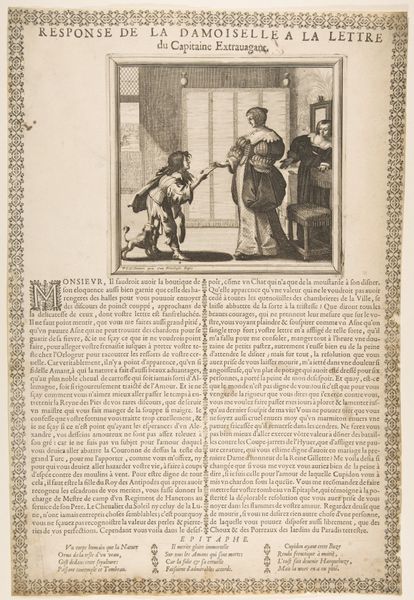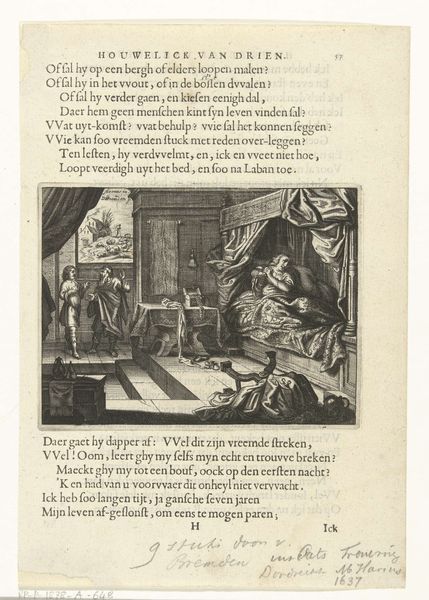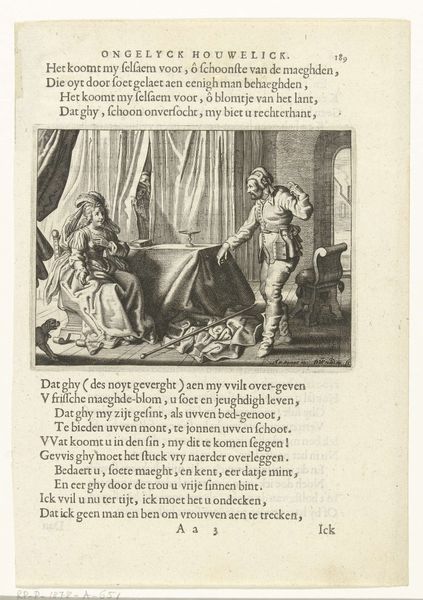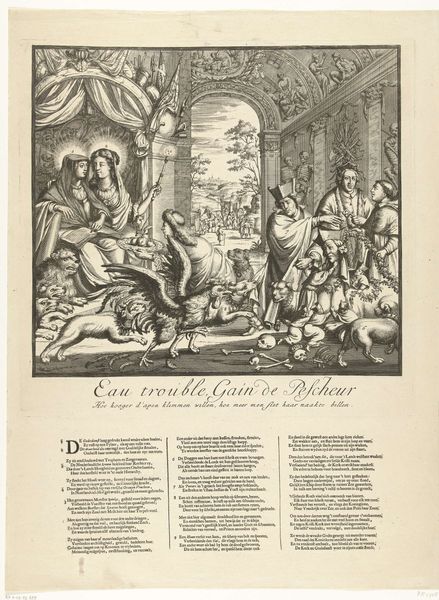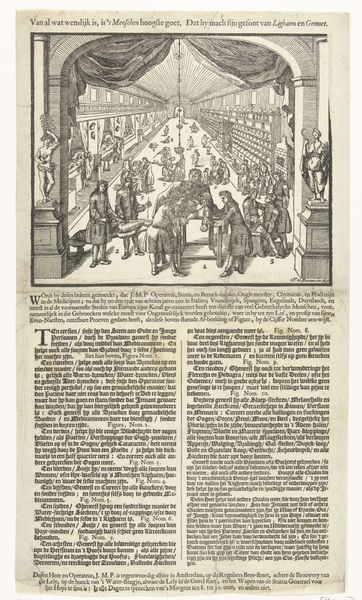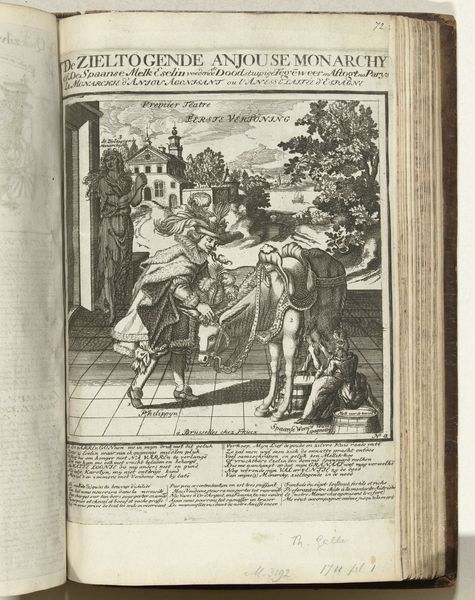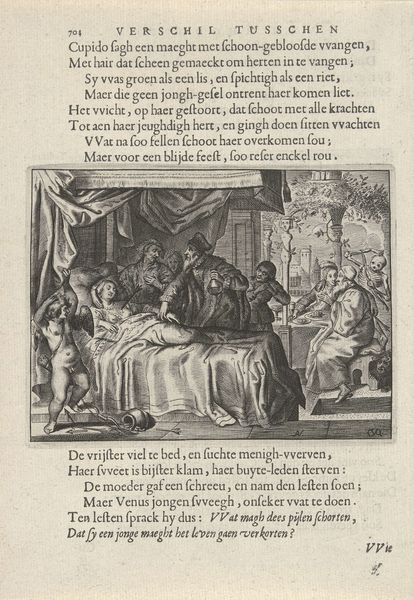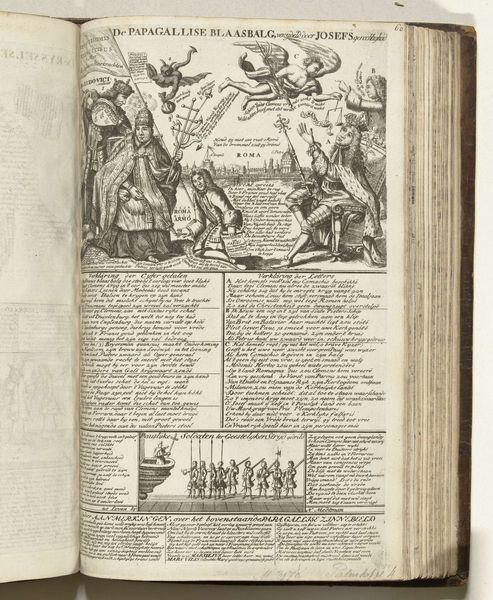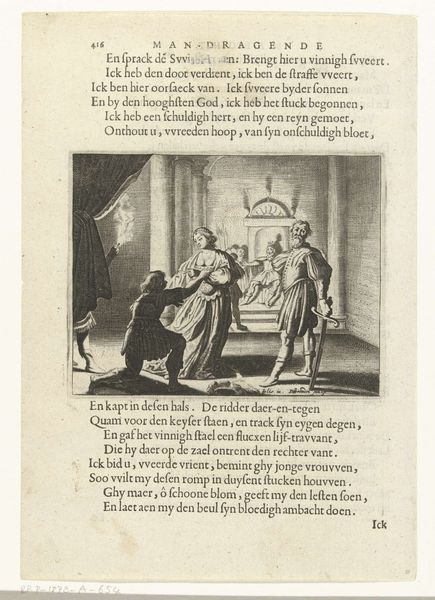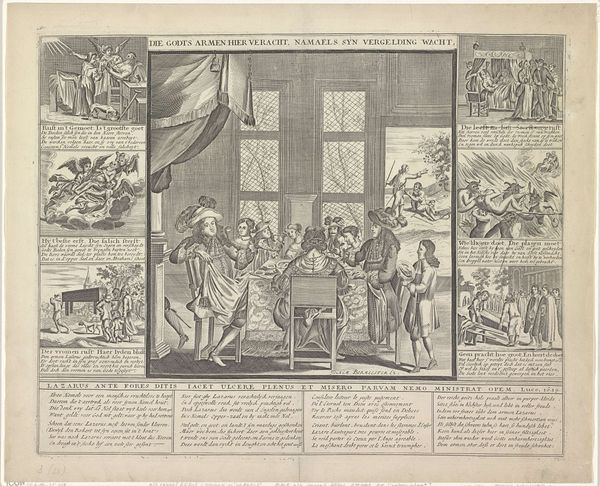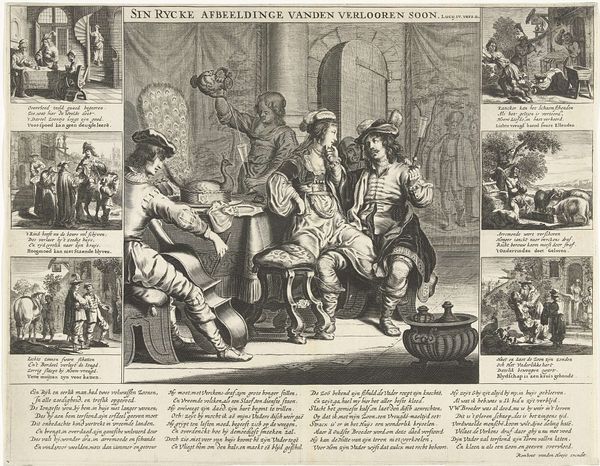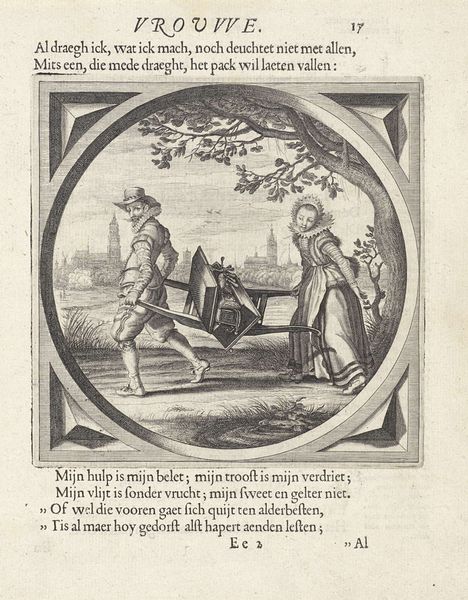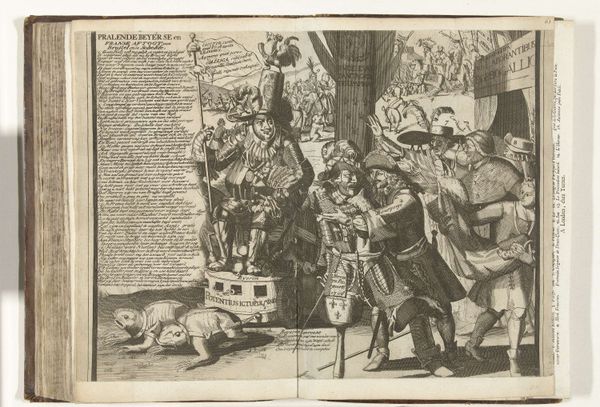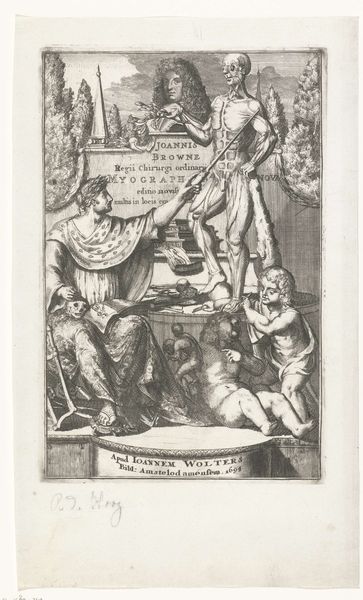
print, engraving
#
portrait
#
baroque
# print
#
history-painting
#
engraving
Dimensions: height 479 mm, width 340 mm
Copyright: Rijks Museum: Open Domain
Editor: Here we have "Praalbed van Maurits, prins van Oranje, 1625," or "The Magnificent Bed of Maurice, Prince of Orange, 1625." It's an engraving, so a print, by Jan Hendriksz. Verstraelen, currently housed at the Rijksmuseum. I'm struck by the sheer amount of detail crammed into this one image. It's quite overwhelming. What do you see in this piece, from your perspective? Curator: As an iconographer, I am drawn to how this print uses symbols to solidify and perpetuate cultural memory. Look closely at the allegorical figure hovering above the bed. It is likely a representation of fame or perhaps divine intervention, descending to bestow honor. Note how the figure directly interacts with the deceased, yet is detached from the mourning figures surrounding the deathbed, connecting the earthly and the divine. Do you see other symbolic cues? Editor: I see the coat of arms prominently displayed in the foreground. Is that significant? Curator: Precisely. The coat of arms serves not only as identification but also as a shorthand for lineage, power, and legacy. In death, these symbols become even more potent, crystallizing the narrative of Maurice's life and achievements for posterity. The text surrounding the image also is not merely descriptive; it is integral to reinforcing the intended reading. It acts almost as captions beneath images in our modern meme culture. Editor: So the artist is intentionally crafting a specific narrative about Prince Maurice? Curator: Undoubtedly. The careful selection and placement of these symbols contribute to constructing a desired image—one of strength, piety, and lasting significance—long after Maurice has passed. Even today, these images and their embedded cultural meaning shape historical perceptions. How might the visual and textual elements together contribute to the memory of Prince Maurice? Editor: It seems designed to ensure he is remembered as powerful, divinely favored, and part of a continuing legacy. Curator: Exactly. So, understanding those symbolic languages helps us see beyond just a historical scene and appreciate its ongoing impact. Editor: It's fascinating how much an image can communicate, even centuries later. I’ll definitely look closer at the symbols used in artworks moving forward.
Comments
No comments
Be the first to comment and join the conversation on the ultimate creative platform.
